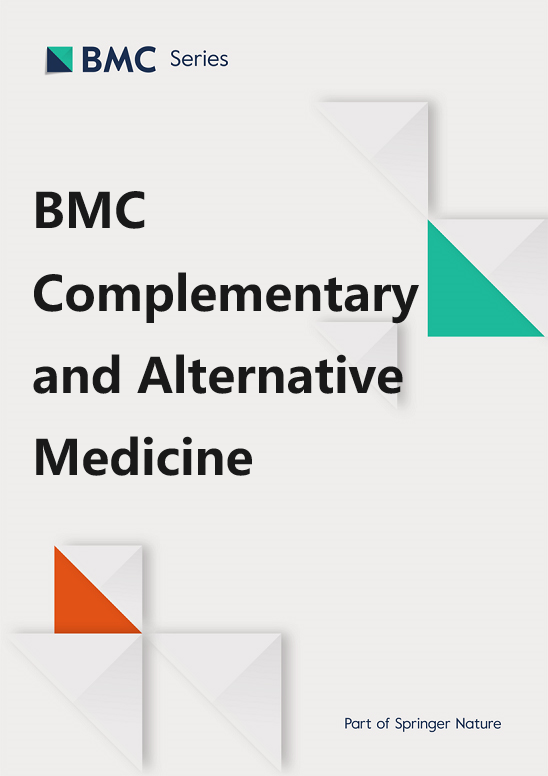用于牙齿保健的双子荠叶和茎提取物的抗菌、抗氧化和细胞毒性活性
IF 3.4
2区 医学
Q1 Medicine
引用次数: 0
摘要
Carissa bispinosa (L.) Desf. ex Brenan 是传统上用于治疗口腔感染的植物之一。然而,证实其治疗特性和光化学作用的数据有限。本研究的目的是调查 C. bispinosa 的叶和茎提取物对口腔感染的保护功效。用不同溶剂萃取后,采用 Folin-Ciocalteau 法测量了酚和单宁的含量。采用微量稀释法评估了提取物对真菌(白色念珠菌和光滑念珠菌)和细菌(化脓性链球菌、金黄色葡萄球菌和粪肠球菌)菌株的最低抑菌浓度(MIC)。利用 2-二苯基-1-苦基肼(DPPH)和铁还原力(FRP)模型来评估提取物的抗氧化潜力。使用甲基噻唑四氮唑测定法评估了叶片丙酮提取物的细胞毒性。甲醇叶提取物的酚含量最高(113.20 毫克 TAE/克),而正己烷提取物的单宁含量最高,为 22.98 毫克 GAE/克。丙酮茎提取物的酚含量最高(338 毫克 TAE/克),茎提取物的总单宁含量最高(49.87 毫克 GAE/克)。甲醇叶提取物的 MIC 值最低(0.31 毫克/毫升),而茎乙醇提取物的 MIC 值最低,为 0.31 毫克/毫升。茎甲醇提取物的 DPPH 自由基清除活性最高(IC50,72 µg/mL),而茎乙醇提取物的 FRP 最高,吸光度为 1.916。叶丙酮提取物的细胞毒性最小,致死浓度(LC50)为 0.63 毫克/毫升。这项研究的结果验证了双孢蘑菇对口腔感染的保护作用。本文章由计算机程序翻译,如有差异,请以英文原文为准。
Antimicrobial, antioxidant and cytotoxic activities of the leaf and stem extracts of Carissa bispinosa used for dental health care
Carissa bispinosa (L.) Desf. ex Brenan is one of the plants used traditionally to treat oral infections. However, there is limited data validating its therapeutic properties and photochemistry. The aim of this study was to investigate the protective efficacy of the leaf and stem extracts of C. bispinosa against oral infections. The phenolic and tannin contents were measured using Folin-Ciocalteau method after extracting with different solvents. The minimum inhibitory concentrations (MIC) of the extracts were assessed using the microdilution method against fungal (Candida albicans and Candida glabrata) and bacterial (Streptococcus pyogenes, Staphylococcus aureus and Enterococcus faecalis) strains. The 2-diphenyl-1-picrylhydrazyl (DPPH) and ferric reducing power (FRP) models were utilised to assess the antioxidant potential of the extracts. Cytotoxicity of the leaf acetone extract was evaluated using the methylthiazol tetrazolium assay. The methanol leaf extract had the highest phenolic content (113.20 mg TAE/g), whereas hexane extract displayed the highest tannin composition of 22.98 mg GAE/g. The acetone stem extract had the highest phenolic content (338 mg TAE/g) and the stem extract yielded the highest total tannin content (49.87 mg GAE/g). The methanol leaf extract demonstrated the lowest MIC value (0.31 mg/mL), whereas the stem ethanol extract had the least MIC value of 0.31 mg/mL. The stem methanol extract had the best DPPH free radical scavenging activity (IC50, 72 µg/mL) whereas the stem ethanol extract displayed maximum FRP with absorbance of 1.916. The leaf acetone extract had minimum cytotoxicity with the lethal concentration (LC50) of 0.63 mg/mL. The results obtained in this study validated the protective effect of C. bispinosa against oral infections.
求助全文
通过发布文献求助,成功后即可免费获取论文全文。
去求助
来源期刊

BMC Complementary and Alternative Medicine
INTEGRATIVE & COMPLEMENTARY MEDICINE-
CiteScore
7.00
自引率
0.00%
发文量
0
审稿时长
3 months
期刊介绍:
BMC Complementary Medicine and Therapies is an open access journal publishing original peer-reviewed research articles on interventions and resources that complement or replace conventional therapies, with a specific emphasis on research that explores the biological mechanisms of action, as well as their efficacy, safety, costs, patterns of use and/or implementation.
 求助内容:
求助内容: 应助结果提醒方式:
应助结果提醒方式:


